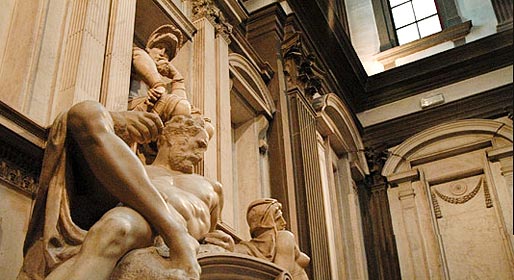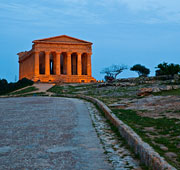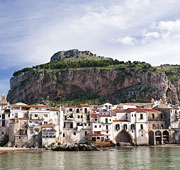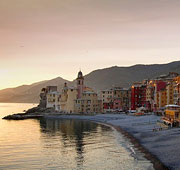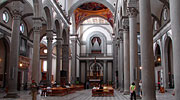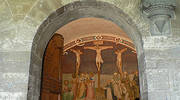San Giovanni
A unique open air theatre, stage to some of the world's most impressive works of art
This tour of Florence begins with the city's cathedral. Reborn after the Dark Ages, Florence became a center of art and culture, political and economic power, reaching the height of its glory under the Medici.
As the prowess of the city grew, the ruling priorate decided that the existing cathedral should be replaced by one which would rival those of Siena and Pisa.
Designer domes
The scheme, commissioned by Arnolfo di Cambio in 1296, set out to surpass anything yet produced. In 1436, at its completion, the cathedral was 153m high, 38m wide and the biggest in Europe'. Today the awe-inspiring Duomo is Florence's signature building, and its dome completely dominates the cityscape.
The cathedral's dome is the largest masonry dome in the world. The structure is a fully self-supporting copula, with a height of 91m and a span of 45m. Designed by the ingenious Filippo Brunelleschi, it took 14 years to complete. If you climb up into the dome, up through the inner and outer shells, to the base of the white marble lantern you are rewarded with a spectacular panorama of the city.
The art works created for the cathedral by Donatello, Luca della Robbia and Michelangelo are now displayed in Museo dell'Opera del Duomo
Bell tower and baptistery
Another amazing view awaits visitors at the top of the Campanile. Begun by Giotto in 1334 the work was continued by Andrea Pisano and Francesco Talenti. When completed the tower reached 84.7 meters. The decorative sculptures and reliefs, which you pass as you climb the tower, portray man's passage from original sin to divine grace.
Both the Campanile and the Duomo are faced with the same polychromic marble as the Baptistery. The oldest building in Florence, thought to date from the 6th or 7th century, the Baptistery is embellished with gilded bronze doors, the most sublime of which are probably the east doors, by Ghilberti, which took 27 years to complete. Inside, the black and white cladding mosaic ceiling and pavement are stunning.
San Lorenzo: mass and market
North of the Baptistery, Florence's San Lorenzo District is home to the city's largest market and the magnificent Basilica of San Lorenzo.
The Medici commissioned Brunelleschi to build the church, the façade of which was never completed, in 1419. The bronze pulpits are by Donatello, who is buried here next to his patron, Cosimo dei Medici. More work by Donatello is found in the Sagrestia Vecchia, one of Brunelleschi's early architectural masterpieces.
The Sagrestia Nuova and Cosimo I's marble mausoleum were designed by Michelangelo, who was also responsible for the Night and Day allegories.
San Marco: angels in the monastery
From San Lorenzo, Via Cavour leads to Piazza San Marco, and the monastery, which now houses the San Marco Museum. It was here that the angelic painter, Fra' Angelico produced some of his most beautiful work - decorating the walls with paintings which combine Medieval simplicity with Renaissance sophistication, quite divinely.
The most beautifully composed, and dramatic of Fra Angelico's works is the "Annunciation", which greets you as you enter the upper floor.
The tireless Fra Angelico decorated a total of 43 cells, thus creating one of the largest Renaissance fresco cycles ever
The heart and soul of Florence
Yet more amazing works of renaissance art can be seen in the nearby Academia. Highlight of the exhibition is, no doubt, Michelangelo's statue of "David" - one of the symbols of Florence - commissioned in 1501, and which once stood in Piazza della Signoria.
South east of the Academia, Via Cesare Battisti leads you to the beautiful Piazza delle Santissima Annunziata, begun in the 1420s by Brunelleschi and bordered by the Spedale degli Innocenti and the Church of Santissima Annunziata.
Commissioned by the silk weavers gild in 1419, the Spedale degli Innocenti, designed by Brunelleschi, was the first orphanage in Europe and remained in use until 1875.

